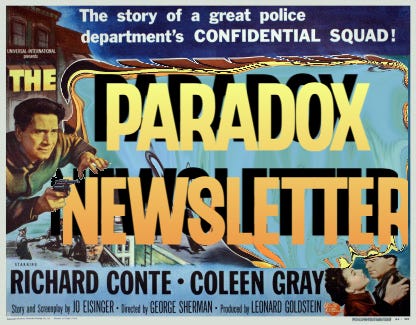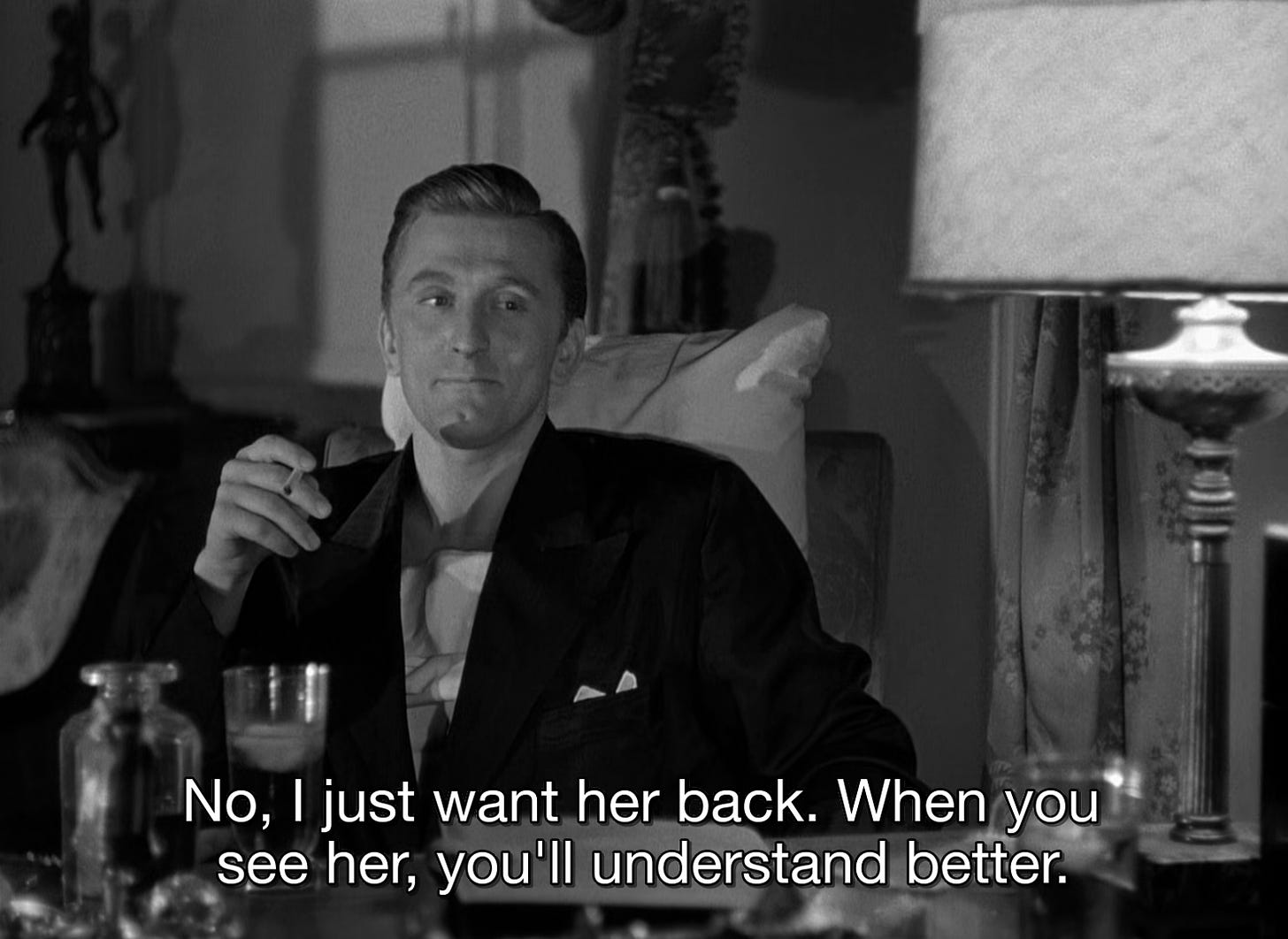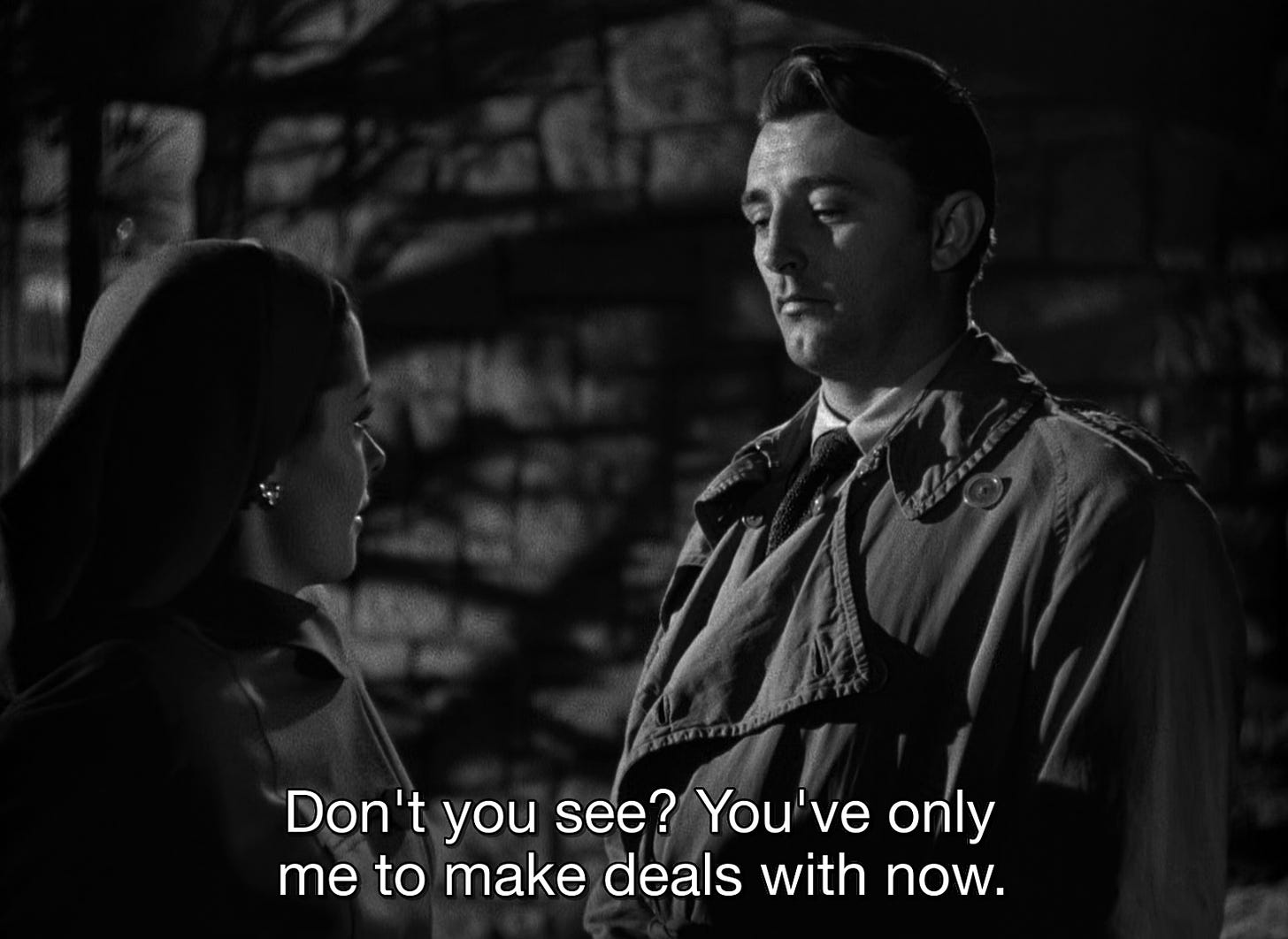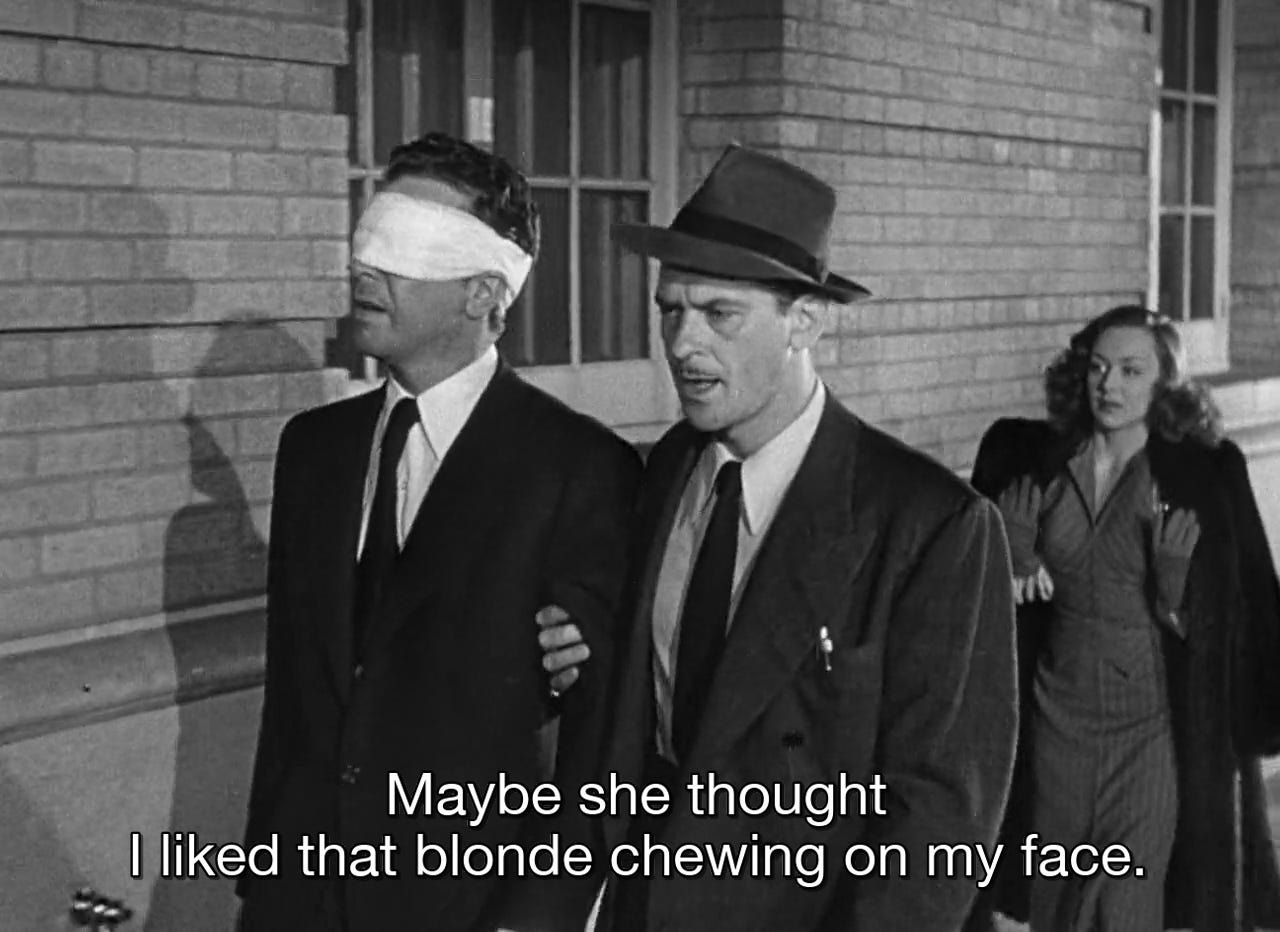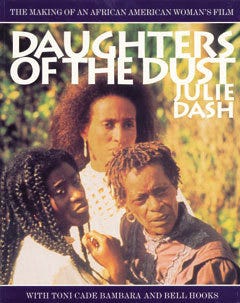Issue #384: Anti-Social Women in Film Noir
Even though most of the newsletter this week is about it, I have to sing praises of the Noir City Boston event that took place at the Brattle Theater this weekend. It’s not technically over, the Brattle will screen Phantom Lady (1944) today. It’s at 6pm, so probably over by the time you read this. And I might not make it because I have to write. I saw ten movies across three days over the period of time where I would usually be starting writing. And I took some notes and left some Letterboxd reviews over the course of the weekend. But there’s always more to say about these fantastic works than the thematic overview I offer now.
There were plenty of intangibles about the weekend that have no place in my analysis of the film. The demographic of the weekend was a little different from most Boston area movie screenings. My friend AJ said, “They’re not making new film noir fans unfortunately.”
A social situation arose during the course of the weekend I hadn’t experienced before. I would drop a review for a movie on LB and immediately get two, three likes. Clicking through to the profile, I’d find their own logging of the film on the same day with tags like mine — “35mm,” “brattle,” “foster hirsch.” I couldn’t tell who was who, so I didn’t actually have a conversation with anyone appreciating my reviews or leaving their own. But it did make the experience a little more communal.
And, of course, I have to mention the peerless film scholar Foster Hirsch who introduced every film from Friday until Sunday. He provided brilliant insights, pointed us to salient questions, and occasionally, I think, framed the films with more of his view than he would’ve liked. In his introduction of Tension (1949), he pointed to André Previn’s on-the-nose jazz scoring of every scene involving Claire Quimby (Audrey Totter). The resulting reaction was a huge laugh from the audience every time the motif would kick in. Hirsch also expressed his enthusiasm for the neon cityscape of Murder, My Sweet (1944), RKO as the best noir studio with the darkest and deepest black and white contrast, Warner Bros. as a studio of progressive, socially conscious noir, and shared various anecdotes about actors and actresses he had met and interviewed.
We had a lot of opportunity to discuss the films, too. Hirsch was very encouraging about my potential future as a professor of film or literature. He affirmed my observation of The Narrow Margin’s (1952) influence on Human Desire (1954), “Fritz Lang would have certainly seen Fleischer’s film,” and discussed the dynamism of train scenes in both The Narrow Margin and High and Low (1963). We also talked about the leftist sympathies of many of the screenwriters. He was very sympathetic to others who expressed the idea that watching eight films in 48 hours presented a unique challenge, “I do have to step out from time to time myself. But I’ve seen them all before.”
Ned Hinkle, the Brattle’s Creative Director, selected a richly textured tapestry of films for the weekend. I hope I teased out just some of their thematic relationships this week. From now on, I’m a Noir City regular.
Fungible and Non-Fungible Women in Noir City Boston’s 2025 Program

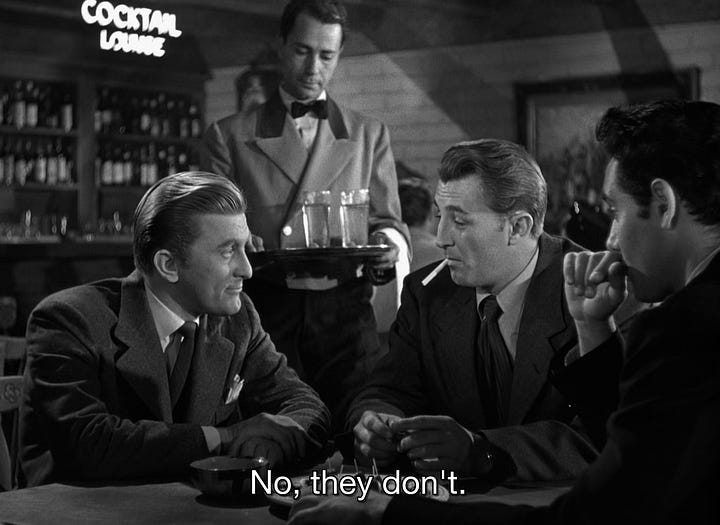
As Jeff Markham (Robert Mitchum) attempts to throw Whit Sterling (Kirk Douglas) off the track of his subterfuge, he tells Sterling, “my friend, there’s a million dames in this world, and they all look like her” to which Sterling replies, “no, they don’t.” There is a lot to be said about misogyny in film noir, and particularly about the thread of gender antagonism that runs through the programming of Noir City Boston 2025’s programming, but perhaps this exchange from Out of the Past (1947) says it all. The “her” in question is Kathie Moffat (Jane Greer), and Markham’s equating her with “a million dames” is a deception that is sustained by the conceit that Markham has never met Moffat. Despite his claim to Sterling, indeed he has met her. He knows, like Sterling knows, that she’s exceptional in some particular way. And based on that knowledge, he’s deceiving Sterling and running away with her instead of returning her to Sterling for five-thousand dollars.
If film noir understands something about the status of women in the 1940s and 50s, it might be in spite of itself. Moffat’s state of exception may be ground in some existential fact, but neither Markham nor Sterling truly understand it’s something other than her appearance that gives her that exceptional quality. Though Sterling treats her as non-fungible, by virtue of her uniqueness, she is reduced to various sums of money: five-thousand, ten-thousand, forty-thousand dollars. To try to express his benevolent intentions for her, Sterling makes an allegory to a failed racehorse who he ‘retires.’ Moffat, it turns out, is a unit of exchange in the film as she circulates between Sterling and Markham. She is the work’s real MacGuffin, more so than the fraudulent income tax documents Sterling sends Markham after in the film’s second act.
What the masculine fantasy elides about Moffat is her agency as an economic actor, not simply a commodity. Her ascension is marked by her capacity to make deals, holding Markham in a bargain of mutually assured destruction.
There is a financial logic, in loose terms, to her demands, too. She tells Markham:
We’ve been wrong a lot and unlucky a long time. I think we deserve a break.
Moffat is one among many women of noir whose anti-social tendencies emerge in an attempt to draw back from the bank of life that which they have been divested of. Just like in Gun Crazy (1950 — not screened as part of the programming this week) when Laurie Starr (Peggy Cummins) tells Bart Tare (John Dall):
Bart, I’ve been kicked around all my life and from now on I’m gonna start kicking back … Four years in reform school, then the Army. I should think they’d owe you something for a change.
Women entering the space of economic activity is threatening to masculine hegemony. In 99 River Street (1953), Christopher (Jay Adler) the fence repeats to jewel thief Victor Rawlins (Brad Dexter), “I don’t do business with women.” I wrote in my review for Letterboxd, the line has multiple meanings.
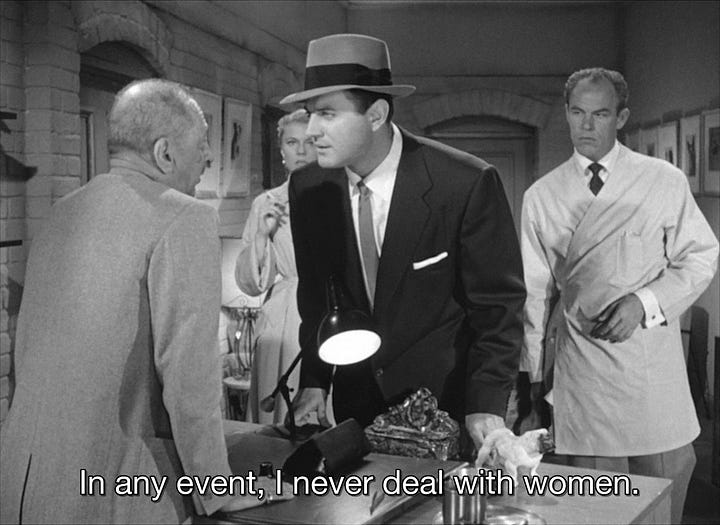
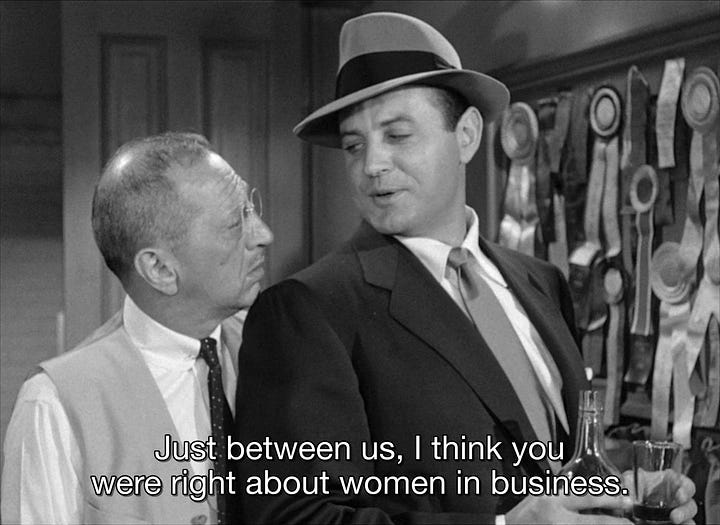
Following Christopher’s explicit logic, there is both the sense that women are not fit to act as economic agents or even be involved in a transaction. He also seems to be suggesting Pauline Driscoll’s (Peggie Castle) role in the caper itself, a diamond heist turned murder, means a greater degree of risk for all involved because women, supposedly, don’t have a stomach for criminality or murder. To a greater degree, though, it’s the well coiffed Rawlins’ transformation to a figurative woman himself, ironically, through what appears to be heterosexual lust. Rawlins being subject to the wants and needs of Pauline renders him effeminate, and the exclusion of Pauline and women altogether opens the space for a provocatively shot queer encounter between Rawlins and Christopher in the film’s final act. In 99 River Street, then, women are not just interchangeable, they’re disposable.
There is also no shortage of mistaken identities in film noir, particularly from a narrow masculinist view of women. The Narrow Margin (1952) sets up Walter Brown’s (Charles McGraw) opinion of women to be knocked down by the film’s conclusion in a relatively proto-feminist polemic. Brown can’t see a wider range of possibility for the subjectivity of a woman, assuming things about Frankie Neall (Marie Windsor) that she in turn embodies to deceive him.
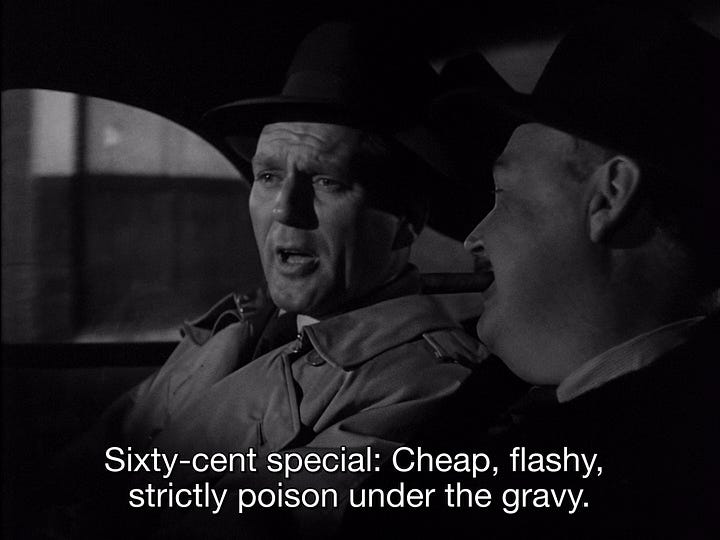
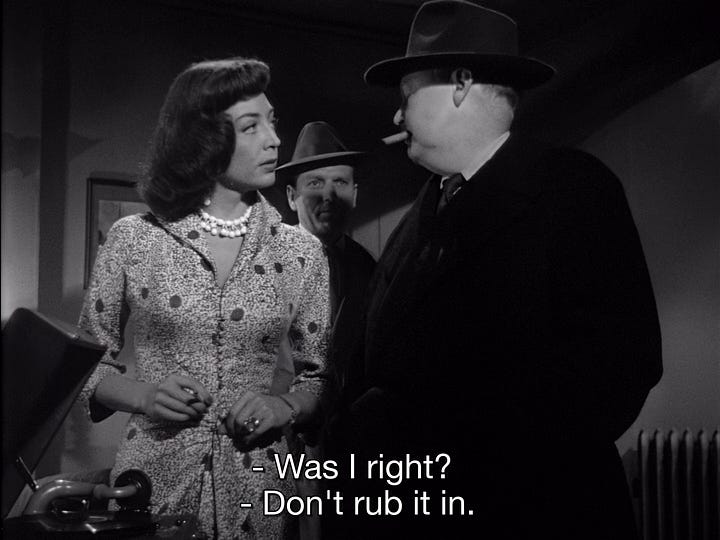
It is a uniquely human deception in the mold of Lacan’s description in Seminar X (2016):
Animals … efface their traces and lay false traces. Do they for all that make signifiers? There’s one thing that animals don’t do — they don’t lay false traces to make us believe that they are false, that is, traces that will be taken for false. laying falsely false traces is a behaviour that is, I won’t say quintessentially human, but quintessentially signifying … When a trace has been made to be taken for a false trace, though in fact they are the traces of my true passage, we know that there’s a speaking subject (63)
It takes Gus Forbes (Don Beddoe), waning in his phallic power, to grant Brown a less disparaging view of women.
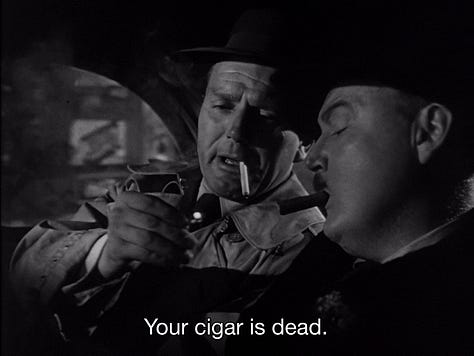
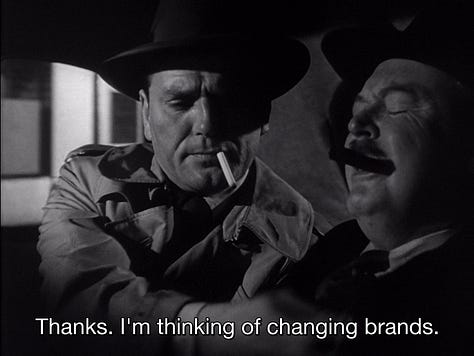
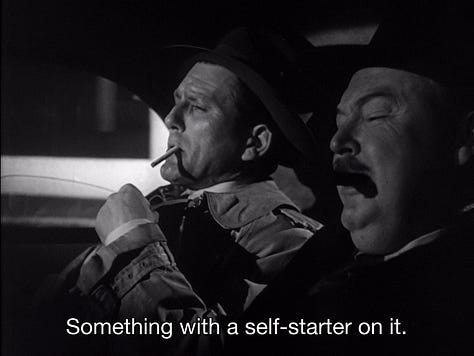
Murder, My Sweet (1944), by contrast, involves Philip Marlowe’s (Dick Powell) own misrepresentation of what he values about women. He misleads both Helen (Claire Trevor) and Ann Grayle (Anne Shirley), demonstrating a preference for Helen, Ann’s step-mother, when in fact his real romantic interest is Ann.
Marlowe’s deception costs him, temporarily, his sight, echoed in Chinatown (1974) and reverberating from Oedipus Rex (429 BC). Even though he ends up with Ann in the end, his ostensible relationship with Helen implicates him in an incestuous relationship through the law’s logic.
Among the other films screened, I haven’t yet mentioned The Sleeping City (1950), Mary Ryan, Detective (1949), Caged (1950), Tomorrow Is Another Day (1951), Tension (1949), or My True Story (1951). That’s quite a few films, but they can all loosely be organized into two wide views of women.1 Mary Ryan, Detective, Tomorrow Is Another Day, and My True Story are redemptive works, like Murder, My Sweet or The Narrow Margin, that ultimately posit a progressive view of women as rational actors, citizens, and multifaceted individuals — with some caveats, particularly in the case of Murder, My Sweet. Caged, Tension, and The Sleeping City, are more similar to 99 River Street and Out of the Past. In these films, a radical view of women must be excavated from their ideological representation of women as villanious, corruptive, and diametrically opposed to polite society.
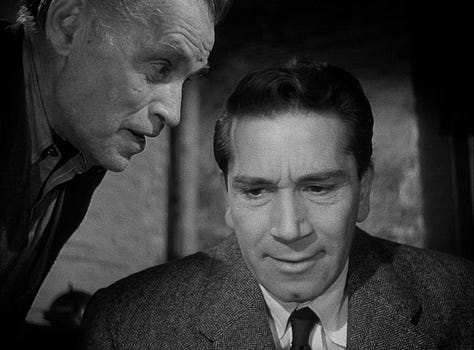
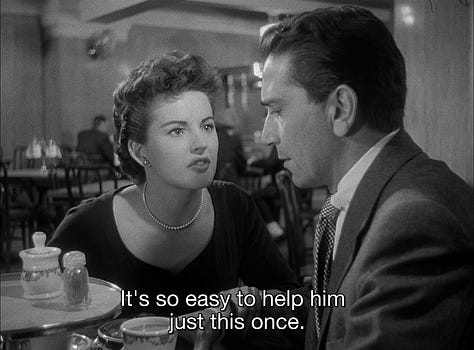
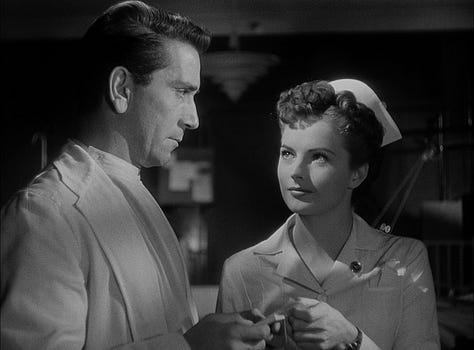
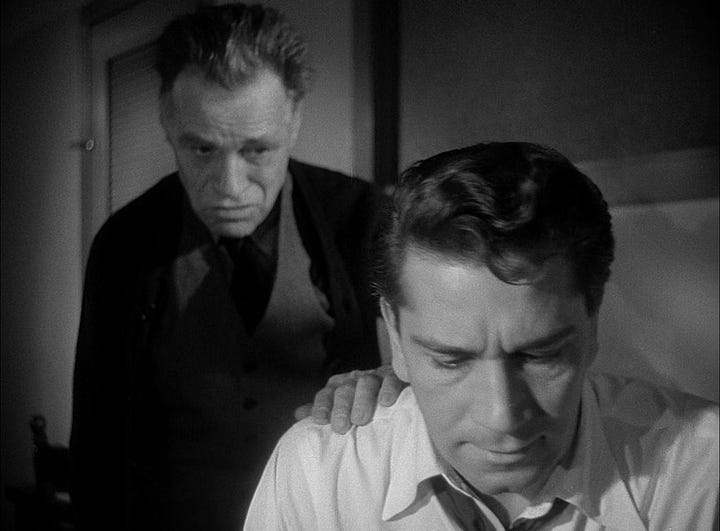
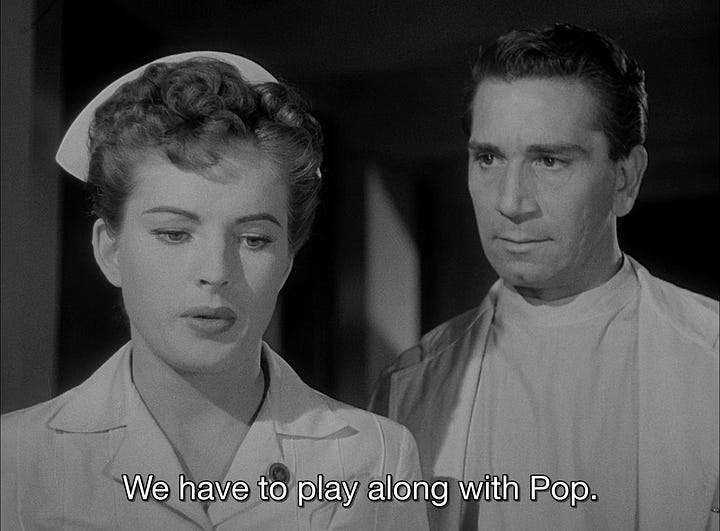
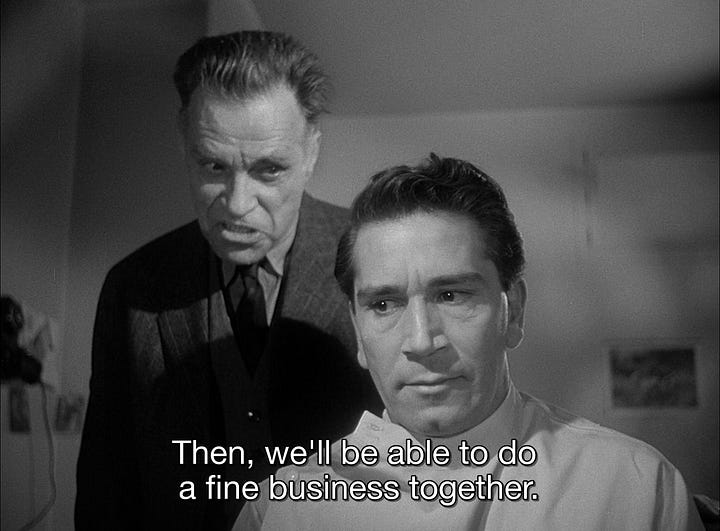
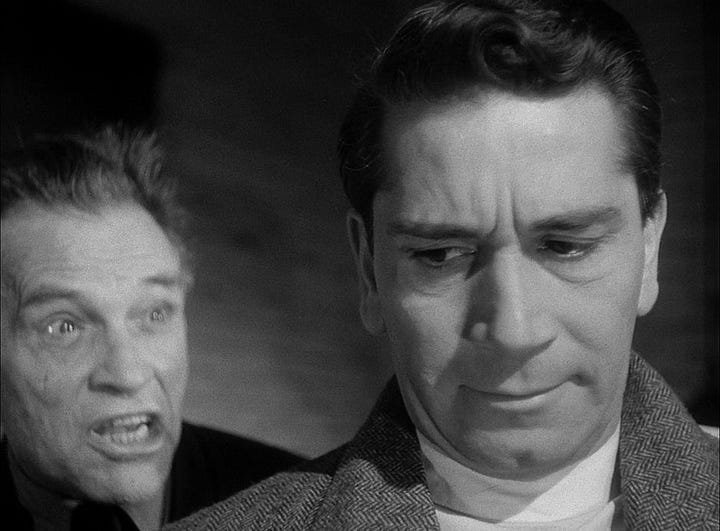
One might read the latter set of films, all but Caged blatantly misogynistic on their face, as the refuge of queer, non-productive, refusing, and potentially even revolutionary women. The women in these films are rendered unassimilable to the social order. This is in contrast to the other five, which reintegrate the characters into social life through happy endings. The unrepentant, unredeemed women are non-fungible not by virtue of their particularity but because assigning any value to them at all is impossible. They do not re-enter any social or market logic as objects of exchange or economic agents.
What is subversive about film noir is rarely gleaned by reading these films with the grain, although there are plenty of blacklisted screenwriters and directors smuggling Marxist parables in their pulp. The position of the femmes, fatale or otherwise, in these works is always vexed and multilayered. But there is often something insurgent in even the films that are egregiously misaligned with an enlightened view of gender — something so insurgent it may critique the hidden misogynistic kernel of that very enlightenment.
Weekly Reading List
Get a taste of the class of commentary I enjoyed this week with Foster Hirsch discussing two of my favorite films of all time.
https://www.viz.com/shonenjump/chapters/sakamoto-days — Many manga get worse over time. Sakamoto Days (2020) is as good as ever.
The Daughters of the Dust (1991) companion book, Daughters of the Dust: The Making of an African American Woman's Film (1992) isn’t available anywhere online I could find. I borrowed it from the Medford library years ago and then found a copy at a library sale. It’s a wonderful companion to the film, though, and includes the screenplay. The film itself will screen at Brattle this week, Wednesday and Thursday.
Until next time.
And these dichotomies are not simple, of course. There are particularly evident redemptive elements to 99 River Street and Tension, and anti-social elements to Murder, My Sweet and The Narrow Margin. I may expand on these loose classifications more in another letter or any other extended treatment of any of the films.


